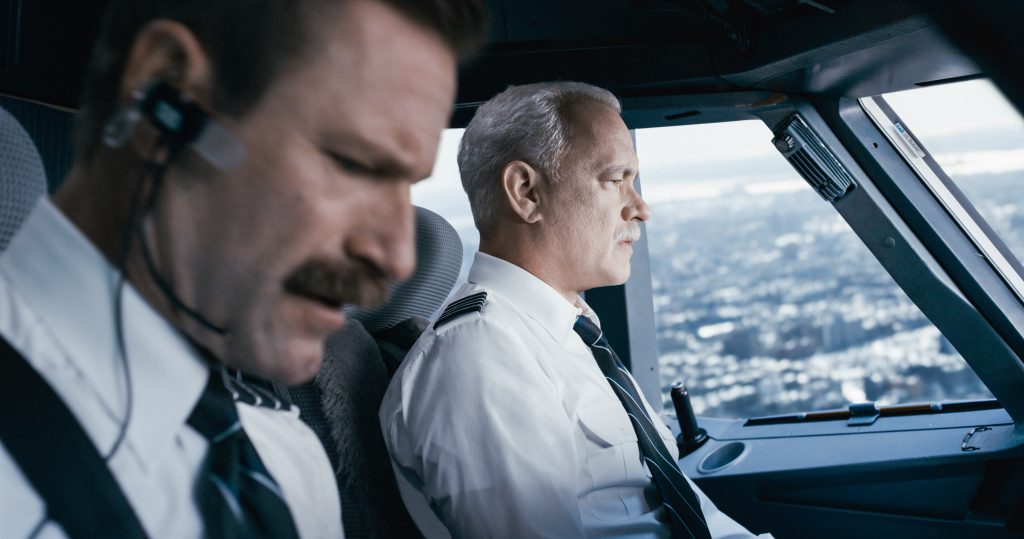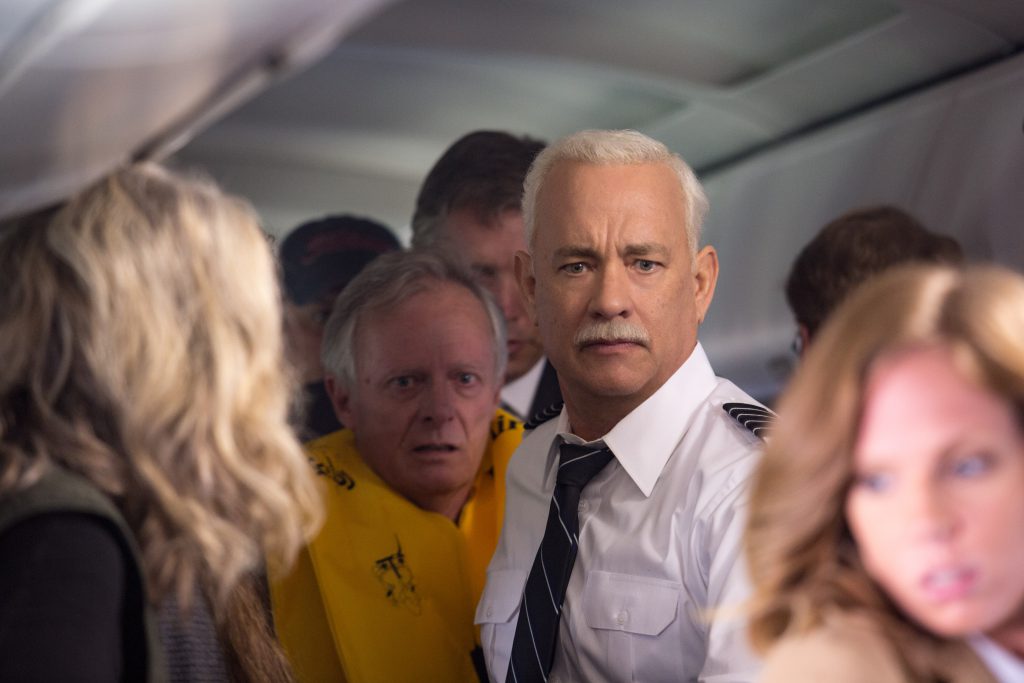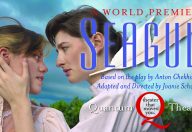‘Sully’ Arrives Right on Time

Captain “Sully” Sullenberger (Tom Hanks) keeps a steady eye on the situation while first officer Jeff Skiles (Aaron Eckhart) checks the emergency handbook. photo: Warner Bros. Entertainment.
Sully is a feat, one which, if not as spectacular as that of its eponymous hero, is still impressive—a riveting one-and-a-half-hour movie, and the antagonists are geese.
On January 15, 2009, geese flew into both engines of US Airways Flight 1549 shortly after its takeoff from New York City’s LaGuardia Airport. Captain Chesley “Sully” Sullenberger, III water-landed the airplane in the Hudson River. Commercial vessels, a privately owned vessel, the Coast Guard, and the New York City Fire and Police Departments rescued those on board. All 155 passengers and crew members survived.
Geese killed on impact make for pretty lackluster antagonists, however. Enter director Clint Eastwood. He begins the film not with the landing but with Sully (Tom Hanks) and First Officer Jeff Skiles (Aaron Eckhart) drawing heat from the National Transportation Safety Board. Board members, headed by Charles Porter (Mike O’Malley) question Sully’s judgement. According to their flight simulations, Sully could have landed safely in either LaGuardia or New Jersey’s Teterboro Airport. His water landing needlessly endangered the passengers and crew.
The NTSB may have their computers, but Sully has his gut plus over 40 years of experience, experience which he drew from to make his choice. It’s classic Eastwood: the individual versus the institution.
Actual NTSB investigators criticized the film’s harsh depiction of their cinematic counterparts, a criticism which The New York Times corroborated in a recent article. Any thoughtful moviegoer, however, should suspect these characterizations are all Hollywood flash anyway. The heat never really fans, and the always lovely Anna Gunn (“Breaking Bad”), who plays one of the board members, extinguishes it much too easily during a public hearing at the movie’s conclusion.
Rather, the movie’s heart beats with the reenactments of that miraculous day. As Sully talks with his wife, Lorraine (Laura Linney), on the phone, the movie flashes back to the afternoon of the flight. Sully purchases a sandwich from an airport terminal convenience store. The film then follows some of the passengers as they prepare for that fated flight. At this same store, we meet a middle-aged daughter traveling with her paraplegic mother; both quarrel over what souvenir the mother should purchase for her grandchild. Then there’s a father, son, and nephew combo, sprinting through the airport so they can catch their flight and make it to their golf vacation. These scenes are endearing, the actors in them a jovial supporting ensemble. When the plane does land, we grow impatient whenever the camera lingers on the other, nameless passengers bobbing in the Hudson.
Hanks, America’s everyman, plays Sully with nuance. In the limelight, his Sully is both modest and uncomfortable, like when a New York bartender names a drink after him (“The Sully:” Grey Goose with a splash of water). Eastwood captures these nuances with tight shots and a thoughtful tracking of Sully’s post-traumatic stress—CGI is used to recreate not only the landing but also the nightmares that he experiences after the rescue.

Sully making sure everyone evacuates the plane quickly and safely. photo: Warner Bros. Entertainment.
All of the CGI looks real and never does it impede the acting. During the landing, the camera shakes, of course, but not so much that we feel nauseated. Our attention, and empathies, are solely on the passengers. We, too, are on board.
Sully and Lorraine never appear alongside each other. They speak via phone, and as such, their relationship relies solely on stilted dialogue. This is more interaction than Sully has with his two daughters, whom Eastwood relegates to silent extras working on their homework while Mom and Dad talk on the phone. Sully’s real partner is Skiles, whom Eckhart plays as a counterbalance to Hanks’s worry, ready with a smile and requisite zingers.
During the ending, Sully is likened to an “X factor,” without which the landing and rescue would have been impossible. Sully quickly corrects the NTSB, lauding Skiles, the flight attendants, and the many rescuers of New York and New Jersey. It’s a nice pivot from the individual to the group. Then, before the credits roll, words appear on the screen honoring those who took part in the Miracle on the Hudson, a 24-minute rescue where every second counted.
That miracle happened during a time when New York and, indeed, the world were reeling from the housing collapse and the likes of Bernie Madoff. 2016 isn’t shaping up to be too great for America or the world: climate change, a vitriolic national election, terrorist attacks, the deaths of Prince and David Bowie, the latter of whom once sang, “We can be heroes. Just for one day.”
January 15, 2009 was that day. Now feels like an appropriate and cathartic time to revisit it.
Christopher Maggio is a Pittsburgh-based writer and editor and loves going to the movies.
Share on Social Media
Follow Entertainment Central
Latest Stories
Sign up for the EC Newsletter







